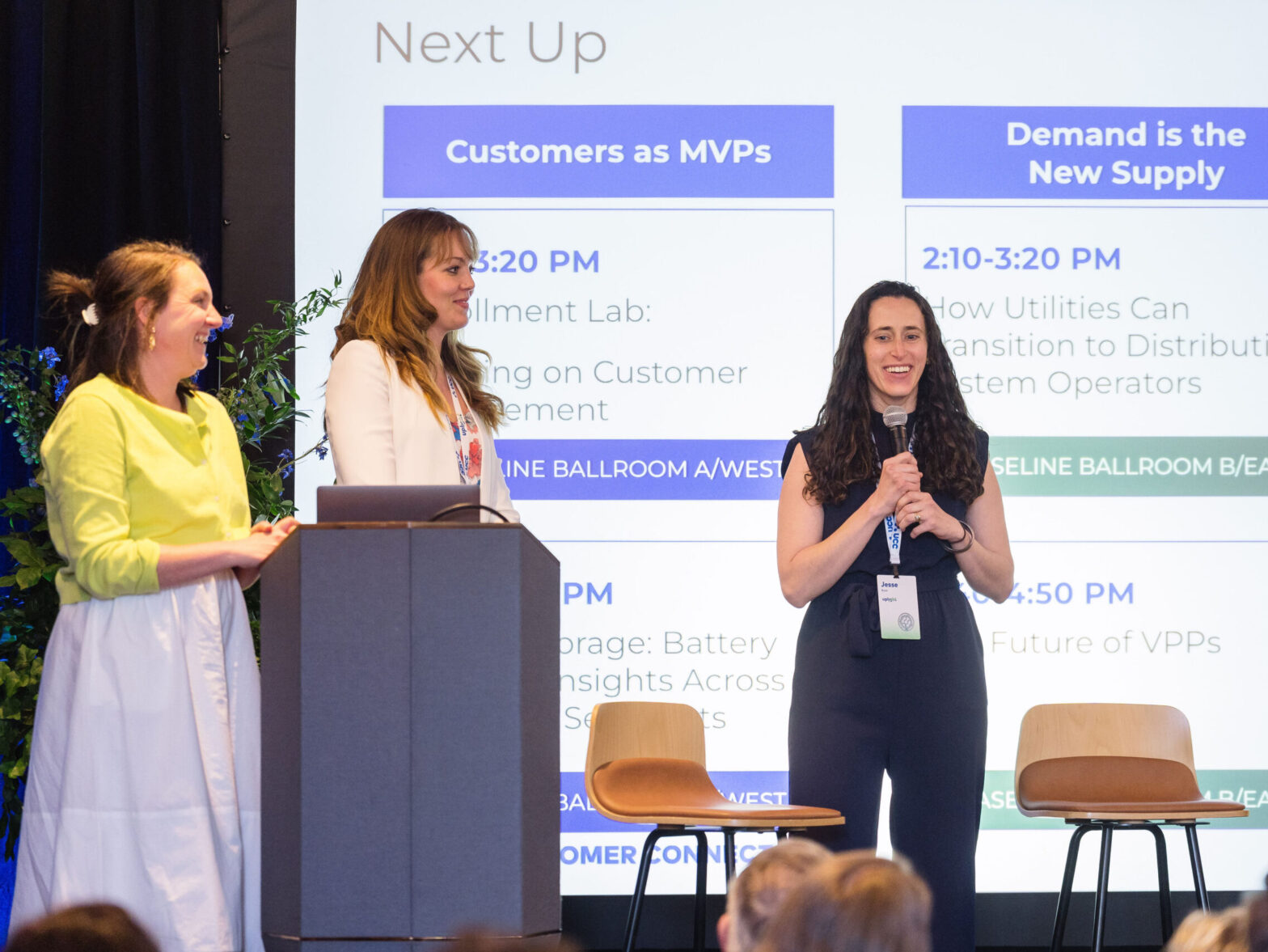Distributed energy resources (DERs) are rapidly changing the nature and needs of our energy grid, making electrification and digitization two of the most important megatrends – and imperatives – facing utilities and the grid today.
The modern grid needs solutions that create compelling opportunities for customers to actively participate in the energy transformation. Harnessing the collective power and massive potential of the growing number of distributed energy assets, we can deliver a powerful step change in flexible capacity that results in a more resilient grid. Last month, Uplight announced an agreement to acquire AutoGrid, putting us firmly at the center of these energy transformation imperatives.
One (of many) new opportunities we’re excited about is Virtual Power Plants. VPPs are an aggregation of DER technologies (think: smart thermostats, electric vehicles, solar panels, and battery storage) that utilities can call upon to help balance the grid-like offsetting peaks and valleys of clean energy and reducing demand when everyone needs electricity simultaneously. A demand response program can be considered a type of VPP, but VPPs are rapidly evolving to include more device types and be used much more dynamically.
VPPs have become a buzzworthy term over the past few months. Not only are VPPs a cost-effective way to improve grid reliability, but they are cheaper to deploy than gas peaker plants or utility-scale battery programs. In fact, The Department of Energy says that tripling the scale of VPPs – deploying 80-160 GW – by 2030 could help cost-effectively manage the clean electricity boom. The Brattle Group put a number on the savings: between $15 and $35 billion in capacity investment over the next decade.
Many in the industry are digging in to see how to tap into this massive potential. We’ve seen both new and established companies including Ford, GM, Google, and SunRun working together to advance the market. This is great news because rules for wholesale markets and states vary widely, from device eligibility to compensation, to data requirements, and there’s a lot to do to ensure it’s easy for customer DERs to participate and get compensated fairly.
Why We Need a Connected Customer Experience
The real key to unlocking the power of VPPs? A connected customer experience. Although customers adopt different DERs through different channels, energy providers need to deliver a unified digital solution that makes it easy for them to access various rebates and programs. At Uplight, we see that the most successful utility VPP initiatives are those that use an integrated technology approach to educate customers at the point of sale, enroll them into programs upon purchase, and engage them continually to retain participants and provide flexibility year after year. Without a smooth and streamlined experience for customers, utilities run the risk of failing to hit VPP enrollment targets and/or losing capacity due to customer attrition.
Utilities in many regions are already utilizing VPPs to deliver meaningful results at scale. This past summer, utilities in Missouri, Illinois, and Georgia used Uplight’s demand response as a programmatic tool to address grid emergencies. We also helped California avoid forced outages during all-time record-breaking temperatures. PG&E’s demand response program, run by Uplight, recently reached over 100,000 device enrollments and has shifted up to 40 MW per event––half the capacity of a typical natural gas peaker plant. Most recently Puget Sound Energy and Uplight partner AutoGrid announced plans to scale up a multi-asset VPP comprising EVs, battery storage, and other DER to provide 100 MW of capacity by 2025.
Where do we go from here?
To make the promise of VPPs a reality, we need the right market conditions in place to enable the market to scale. We’re already digging in with utilities, regulators, and industry leaders to help shape the policies and regulations that will enable VPPs to deliver a win/win/win: for utilities, the clean energy market at large, and energy customers. But, as with all great things, there is more work to do.
If you want to learn more about how VPPs can help you achieve your load flexibility goals, reach out to our team at [email protected]




